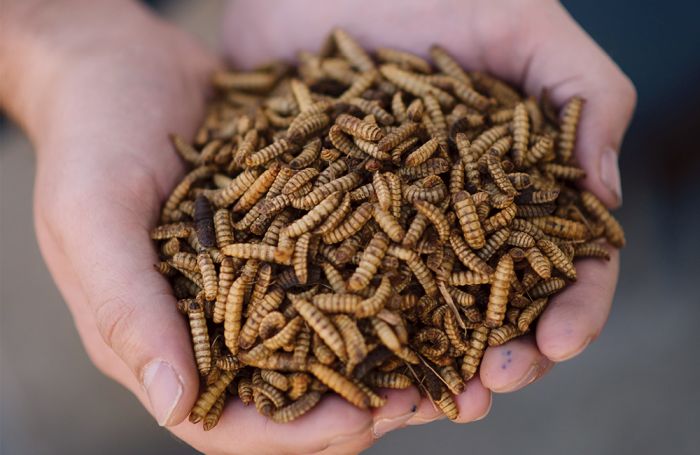The pet food market, especially in developed regions, owes its ongoing growth in large part to
premiumization, or consumers buying higher-priced pet foods sporting label claims such as natural, grain-free and high meat or protein, said Jared Koerten, head of pet care for
Euromonitor International. These products traditionally have been sold exclusively in the pet specialty channel, but their expansion into mass market outlets, often at lower prices, is changing premiumization’s effect on pet food.
Yet premiumization is evolving, Koerten believes. During the American Feed Industry Association’s 12th Annual Pet Food Conference, held February 12 in conjunction with the International Production and Processing Expo in Atlanta, Georgia, USA, he presented three new frontiers that pet food brands may want to pursue to continue to grow and succeed: ethics, sourcing and sustainability; value for money; and customization and personalization.
Pet food premiumization history, short-term prospects
Euromonitor has identified premiumization as a global “megatrend” for nearly all consumer products, Koerten said, and it definitely applies to pet food. From 2013 to 2018, the average global price of pet food increased 18.5 percent, to nearly U.S.$3.50 per pound.
Yet overall pet food growth is slowing in developed markets, partly due to “
mass premiumization.” For human food, one of the new frontiers of innovation is organic, which has experienced 8.2 percent compound annual growth (CAGR) since 2013, but pet food has not kept pace, according to Koerten. Instead, much of the short-term innovation in pet food seems to be coming from new formats and processing technologies like cold-pressed, air-dried, freeze-dried, oven baked and frozen. He also named humanized formats such as filets, purees and soups/broths.
The three frontiers for pet food premiumization that Koerten presented look out 20 to 30 years.
1. Ethics, sourcing and sustainability
Though Euromonitor does not track ethical label claims on pet food, its data for human foods show increasing sales for claims related to sustainable sourcing, animal welfare, clean label, religious labels and sustainable packaging. Globally, nearly 65 percent of consumers say they try to have a positive impact on the environment through everyday actions, he said.
For pet food, this could manifest through sustainable proteins, recyclable packaging and even food miles (local sourcing of foods and ingredients), Koerten suggested. Traditionally, pet food was very sustainable in that it used by-products from the human protein stream. Now, with humanization and demand for “human grade” meats, a conflict has arisen. So, the industry is and should be looking at alternative proteins, Koerten said, including insects, vegan options and MSC-certified fish proteins.
Some companies are also already investing more heavily in recyclable pet food packaging. Mars Petcare just began a recycling program with TerraCycle, he said, while Nestle is launching a packaging research institute.
2. Value for money in pet food
As middle classes continue to grow in emerging markets, they will also continue to become pet owners or trade up from table scraps to commercial pet food, or from economy brands to mid-priced ones, Koerten said. He described Asia as ground zero for this growth, presenting data showing rising CAGRs through 2023 for mid-priced and premium pet food categories in Asia and falling CAGRs for economy-priced. (Earlier in his presentation, he identified
Asia as a new pet food frontier on its own because of its robust growth.)
The key, Koerten explained, is that these newer pet owners can find value for their money, and that concept definitely appeals to people in developed markets, too. “People globally like finding bargains,” he said, pointing out the success of “off price” retail outlets in North America like Nordstrom Rack, TJ Maxx and Aldi, plus Lidl in Europe.
With pet food, this is happening with premium private label, which is growing more than twice as fast as premium branded products, according to Koerten: from 2013 to 2018, sales of premium private label pet foods had a 14.5 percent CAGR, compared to 6.5 percent for premium branded products. Part of the mass premiumization effect, this is reshaping the pet food market in the U.S., pushing traditional mass brands to go more natural and premium with their legacy brands.
3. Pet food customization and personalization
Koerten described a progression of pet food, from specific formulas – life stage, small breed or breed specific, condition specific – to therapeutic diets sold through the veterinary channel. The next step in the evolution appears to be formulas customized for individual pets, many offered online. It’s a small but growing category, he said, especially among millennials and younger consumers. As it continues to grow and price points come down, the category will likely be even more attractive to younger pet owners, Koerten said.
Even brick-and-mortar retailers are bringing in customization, he added: Petco now has JustFoodforDogs exhibition kitchens in some of its stores, and in Finland, a pet retail chain called Musti ja Mirri developed a loyalty program for dogs themselves – not their owners. A dog enrolled in the program wears a smart collar that is recognized as soon as the dog walks in a store, where staff greet the dog personally, give it a personalized treat and shower it with attention. This is one of the next frontiers.

 TerraCycle, the world’s leader in the collection and repurposing of complex waste streams, has joined forces with Keep Liberty Beautiful (KLB), a Keep America Beautiful affiliate, to collect and recycle cigarette butts throughout Liberty County and Fort Stewart.
“Because cigarette butts are so small, some people do not think they are littering,” said KLB Executive Director Karen Bell. “By working with volunteers throughout Liberty County to conduct cleanups and recycle the cigarette butts it brings awareness to the cigarette litter prevention program.” She also said, “We will 50 cigarette receptacles that Liberty County businesses, parks, restaurants, and bars can have for free! We will have volunteers that will empty the receptacles and ship them off to be recycled.”
Through this program, KLB is not only addressing the nation’s most commonly littered item but also a form of unbiodegradable plastic waste. Since implementing cigarette receptacles in 2014, Keep Liberty Beautiful has raised awareness and furthered their goal of achieving cigarette litter reduction throughout Liberty County and Fort Stewart.
KLB has placed cigarette receptacles in a variety of locations throughout the county including but not limited to: three in Riceboro Creek, one in the Midway Community Complex, one in Half Moon Marina and six at bus stops along General Screven Way. KLB currently maintains a total of thirteen cigarette receptacles throughout the county and ships all collected waste to TerraCycle for recycling.
When processed, the paper and tobacco is separated from the filter and composted. The filter is recycled into plastic pellets which can be used by manufacturers to make a number of products such as shipping pallets, ashtrays and park benches.
“These receptacles will help keep Liberty County free of one of the most littered items on the planet,” said Tom Szaky, founder and CEO of TerraCycle. “With this program, KLB is taking a step to reduce the amount of trash going to landfill while also preserving the area’s natural beauty.”
TerraCycle has collected hundreds of millions of cigarette butts globally. Additionally, through its various recycling programs, it has engaged over 100 million people across 21 countries to collect and recycle more than four billion pieces of waste that were otherwise non-recyclable.
TerraCycle, the world’s leader in the collection and repurposing of complex waste streams, has joined forces with Keep Liberty Beautiful (KLB), a Keep America Beautiful affiliate, to collect and recycle cigarette butts throughout Liberty County and Fort Stewart.
“Because cigarette butts are so small, some people do not think they are littering,” said KLB Executive Director Karen Bell. “By working with volunteers throughout Liberty County to conduct cleanups and recycle the cigarette butts it brings awareness to the cigarette litter prevention program.” She also said, “We will 50 cigarette receptacles that Liberty County businesses, parks, restaurants, and bars can have for free! We will have volunteers that will empty the receptacles and ship them off to be recycled.”
Through this program, KLB is not only addressing the nation’s most commonly littered item but also a form of unbiodegradable plastic waste. Since implementing cigarette receptacles in 2014, Keep Liberty Beautiful has raised awareness and furthered their goal of achieving cigarette litter reduction throughout Liberty County and Fort Stewart.
KLB has placed cigarette receptacles in a variety of locations throughout the county including but not limited to: three in Riceboro Creek, one in the Midway Community Complex, one in Half Moon Marina and six at bus stops along General Screven Way. KLB currently maintains a total of thirteen cigarette receptacles throughout the county and ships all collected waste to TerraCycle for recycling.
When processed, the paper and tobacco is separated from the filter and composted. The filter is recycled into plastic pellets which can be used by manufacturers to make a number of products such as shipping pallets, ashtrays and park benches.
“These receptacles will help keep Liberty County free of one of the most littered items on the planet,” said Tom Szaky, founder and CEO of TerraCycle. “With this program, KLB is taking a step to reduce the amount of trash going to landfill while also preserving the area’s natural beauty.”
TerraCycle has collected hundreds of millions of cigarette butts globally. Additionally, through its various recycling programs, it has engaged over 100 million people across 21 countries to collect and recycle more than four billion pieces of waste that were otherwise non-recyclable.

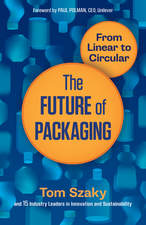



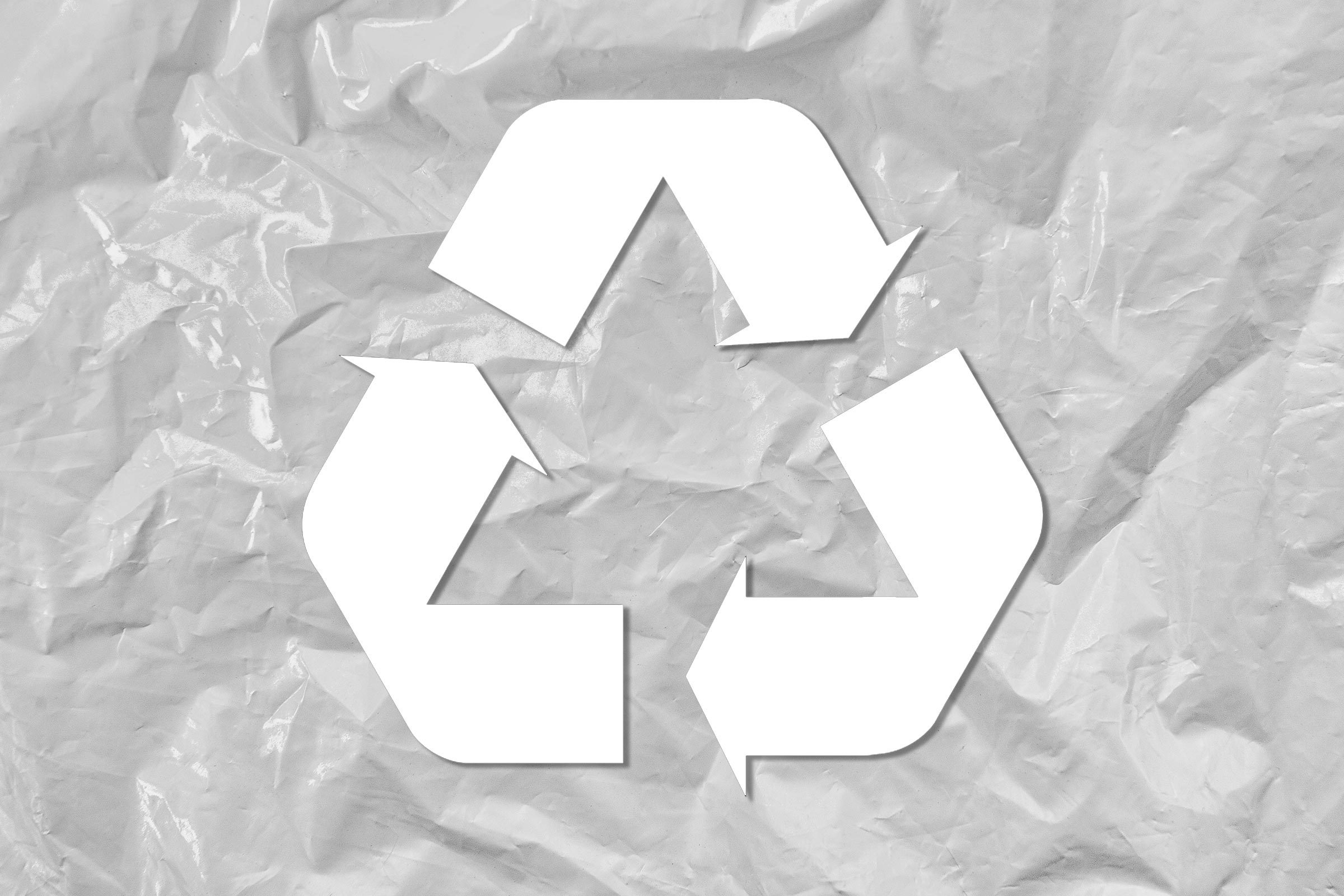 Americans use a shocking 100 billion single-use plastic bags a year—a huge number of which make their way into combined sewage overflows and then on to the ocean, where they pollute global waters and kill upwards of 100,000 marine animals per annum, according to the
Americans use a shocking 100 billion single-use plastic bags a year—a huge number of which make their way into combined sewage overflows and then on to the ocean, where they pollute global waters and kill upwards of 100,000 marine animals per annum, according to the  Any house with kids is likely to have a never-ending supply of crayons, some of which are too short to use or quickly fall out of favor. Instead of sending these non-biodegradable items to the landfill, though, you can give them a new life and new purpose by donating them. Programs like
Any house with kids is likely to have a never-ending supply of crayons, some of which are too short to use or quickly fall out of favor. Instead of sending these non-biodegradable items to the landfill, though, you can give them a new life and new purpose by donating them. Programs like 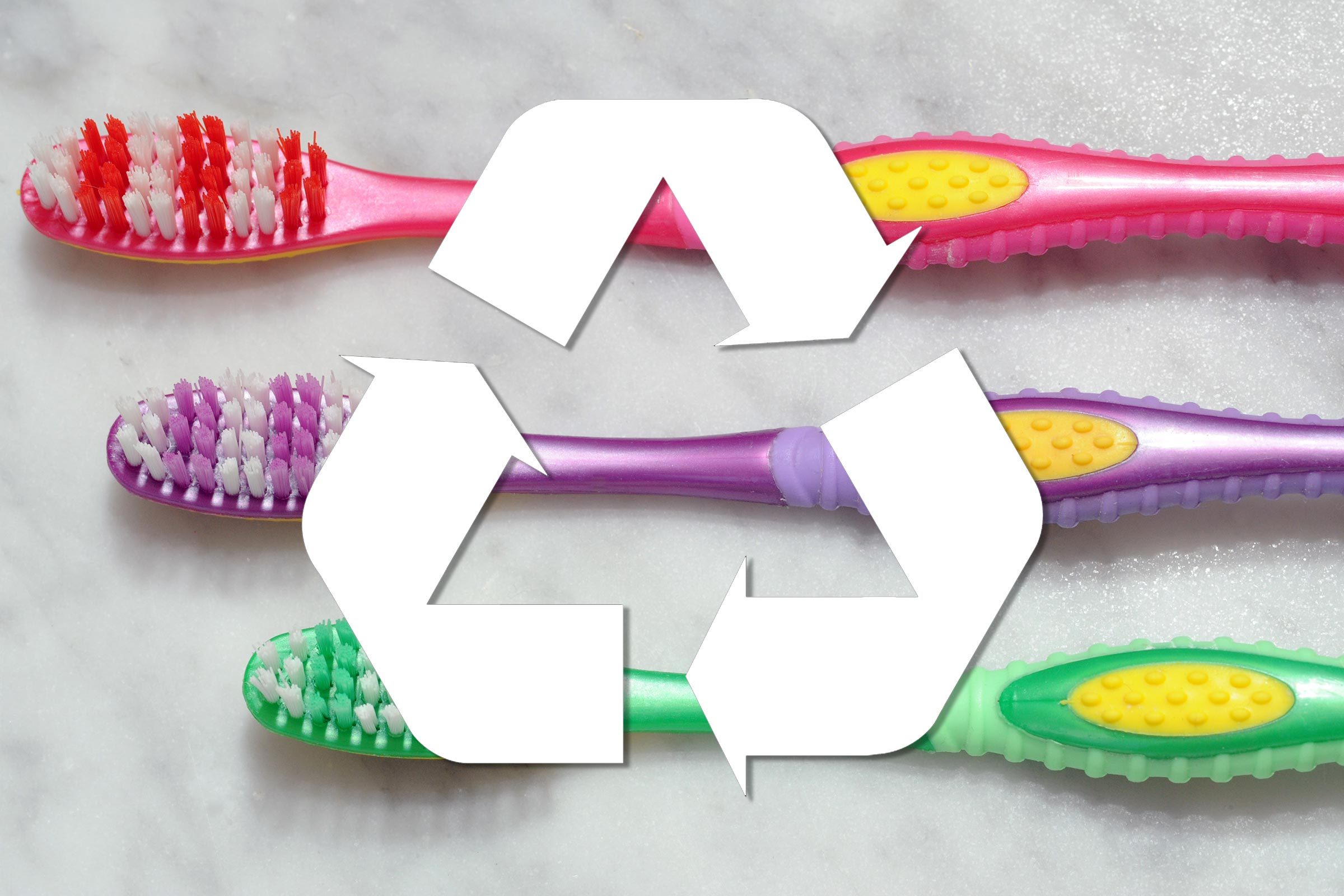 Eco-minded toothbrushes, made with sustainable materials like bamboo or with disposable, replaceable heads, are helping to keep some of the world’s 3.5 billion toothbrushes out of oceans and landfills every year. But you can do a more efficient job of disposing of the plastic ones too. A
Eco-minded toothbrushes, made with sustainable materials like bamboo or with disposable, replaceable heads, are helping to keep some of the world’s 3.5 billion toothbrushes out of oceans and landfills every year. But you can do a more efficient job of disposing of the plastic ones too. A 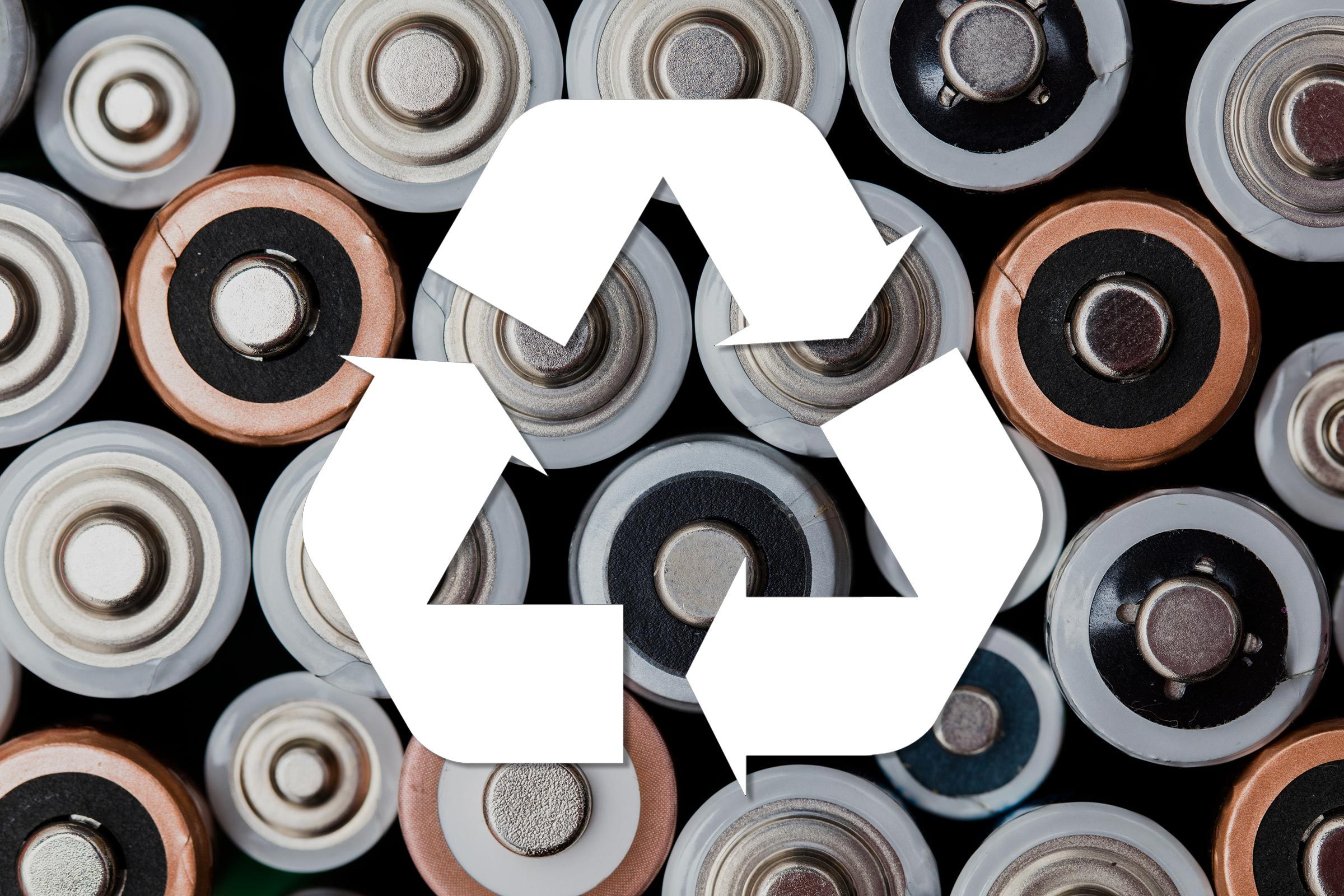 Tossed batteries are an ecological nightmare, corroding as they sit in the landfill and leaching toxic chemicals into the soil and the air, according to
Tossed batteries are an ecological nightmare, corroding as they sit in the landfill and leaching toxic chemicals into the soil and the air, according to 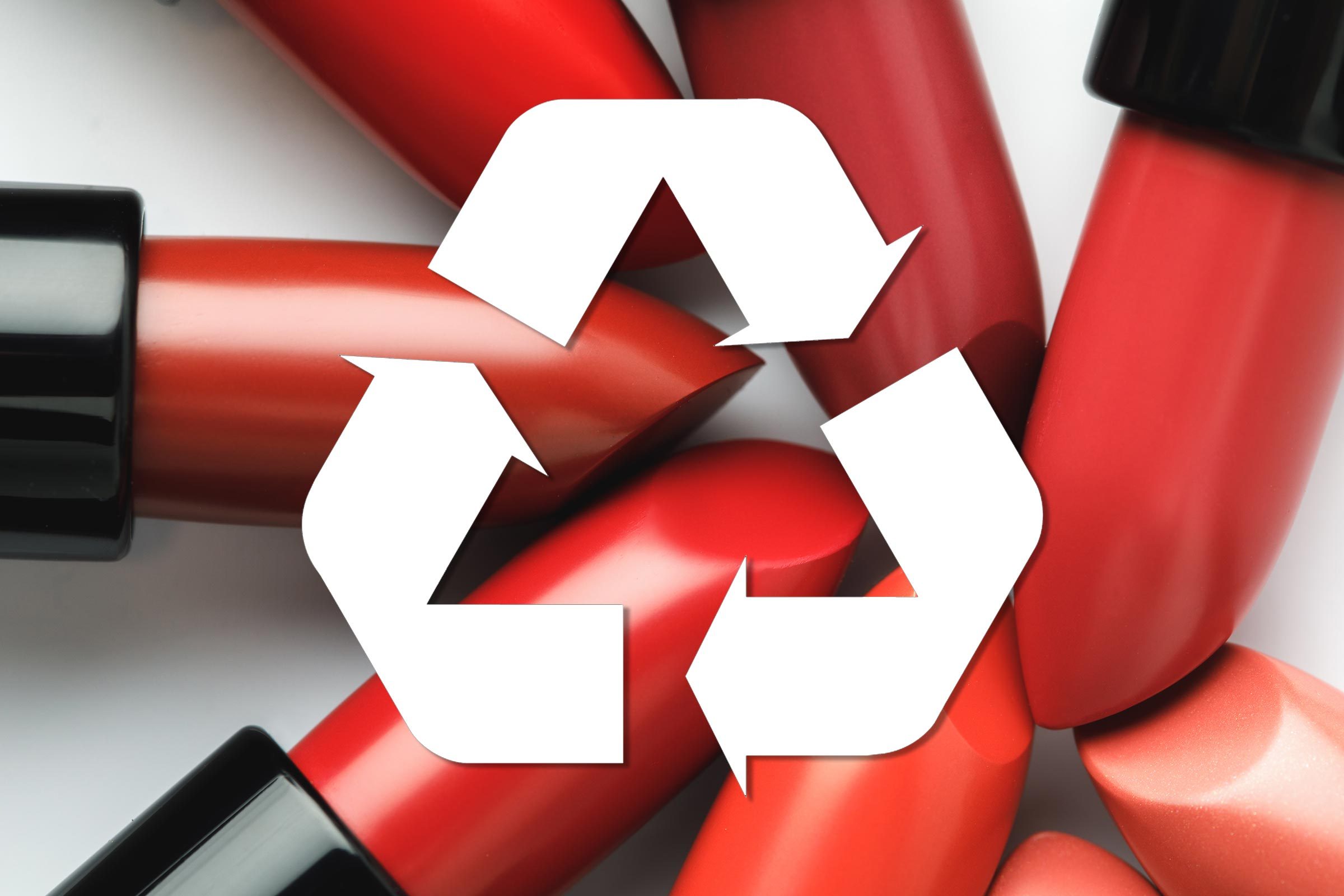 Y
Y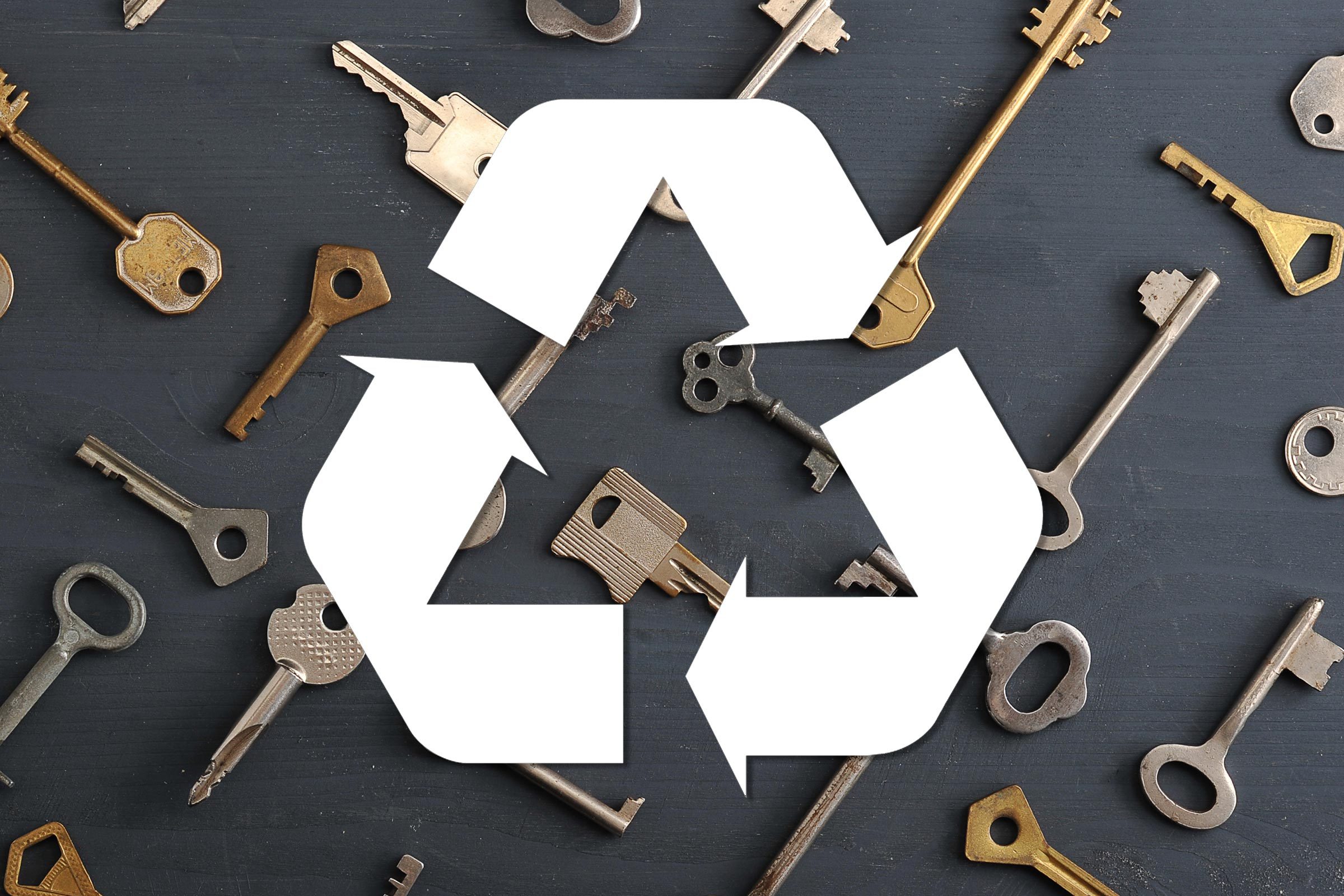 Almost everyone’s got a drawer in the house holding mystery keys they’ve been hanging on to for years. Rather than throwing them in the regular trash,
Almost everyone’s got a drawer in the house holding mystery keys they’ve been hanging on to for years. Rather than throwing them in the regular trash,  In our increasingly disposable society, Americans generate close to
In our increasingly disposable society, Americans generate close to  Livescience.com
Livescience.com  Remodeling your bathroom? Believe it or not, many recycling centers will take your old toilet and turn it into the concrete that goes into local roads and sidewalks.
Remodeling your bathroom? Believe it or not, many recycling centers will take your old toilet and turn it into the concrete that goes into local roads and sidewalks. 
 It’s inevitable—every winter you unpack the holiday decoration boxes, untangle the strings of white and colored lights, only to discover that at least one strand of them has gone dead. Programs abound for recycling them, and some even reward you with discounts or gift cards. You can find a list of possible drop-off spots at
It’s inevitable—every winter you unpack the holiday decoration boxes, untangle the strings of white and colored lights, only to discover that at least one strand of them has gone dead. Programs abound for recycling them, and some even reward you with discounts or gift cards. You can find a list of possible drop-off spots at  Make your recycling efforts go further – and make a difference for our planet – with our easy tips.
A lot of us already set aside plastic milk jugs, glass bottles and old newspapers for the recycling bin. But with Earth Day approaching, it doesn’t hurt to ask: Could we all be doing more? A lot of times, our good intentions to help the planet are thwarted by recycling incorrectly or simply not knowing what can be recycled. If you’re looking to pitch in more – or even to just get started! – check out our easy-to-follow tips.
Start at the Supermarket
Assess your shopping habits and think about the items you buy that produce the most waste. Look at foods packaged in unnecessary plastic wrap or products in needlessly excessive packaging. Be more mindful and decide if there’s an eco-friendlier way to purchase what you need. For example, you can buy loose fruit and vegetables instead of pre-packaged ones.
If you’re stumped about how to recycle certain essential items like empty detergent containers or used air fresheners, check out
Make your recycling efforts go further – and make a difference for our planet – with our easy tips.
A lot of us already set aside plastic milk jugs, glass bottles and old newspapers for the recycling bin. But with Earth Day approaching, it doesn’t hurt to ask: Could we all be doing more? A lot of times, our good intentions to help the planet are thwarted by recycling incorrectly or simply not knowing what can be recycled. If you’re looking to pitch in more – or even to just get started! – check out our easy-to-follow tips.
Start at the Supermarket
Assess your shopping habits and think about the items you buy that produce the most waste. Look at foods packaged in unnecessary plastic wrap or products in needlessly excessive packaging. Be more mindful and decide if there’s an eco-friendlier way to purchase what you need. For example, you can buy loose fruit and vegetables instead of pre-packaged ones.
If you’re stumped about how to recycle certain essential items like empty detergent containers or used air fresheners, check out 